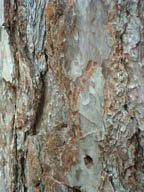Aylestone: The Old Packhorse Bridge (15C)
It's a long stone bridge, originally 200 metres but only 50 remain, with 11 arches, some slightly pointed and gothic looking and 'cutwaters' - buttresses that stand out like the prows of boats that presumable 'cut' the water and relieved the pressure on the stonework in floods. It's about one cart width with little refuges over the cutwaters to allow pedestrians to move out of the way of oncoming carts.
aside: look at this very funny blog to see an interesting story sort of related to this :>) http://idlethoughtsofanidlewoman.blogspot.com/2007/03/le-derriere-du-cheval.html
In the past, marshland was a bigger danger and obstacle to travel than rivers - rivers often have a place where they can be forded safely or bridges can be built. Marshland stretches over larger areas and is impassable.

50 metres of the bridge survives, the canal cut through and destroyed one end of it in Victorian times and an old hump back brick bridge with a higher arch crosses there - the meadows still flood and the pools vary with the rainfall and sunshine. The sketch below shows the Victorian canal bridge from the modern concrete bridge over the Byam. (watercolour and coloured pencil)
The river Byam - more a stream than a river - joins the river Soar /canal here, so with the flooded pools there is a lot of water and a complex range of bridges to cross the various elements - the old Victorian brick bridge over the canal, the ancient packhorse bridge, modern concrete bridges carrying the footpath that runs alongside the river for miles and further along, road and railway bridges.
This is on the edge of the city but is really peaceful and rural with ducks and moorhens and swans.

Once when I was sketching here a snake swam down the river and came out just beside me - we only have one poisonous snake, the adder, and this was just a large grass snake. It was the first time I'd ever seen a snake in the wild - I was so quiet sketching that it didn't worry about me and passed only inches away.
These swans are from Frog Island, though there are swans nests here as well.
I need to finish the big paintings but I'm enjoying being able to get out in the better weather so they are still on hold at the moment :>)




Comments
and thank you :)
Lindsay is doing one on her local waterways in the US as she liked the idea so the cross Atlantic thing will be interesting :)
In my opinion the River Biam is a much underrated feature of "wild" Leicester.